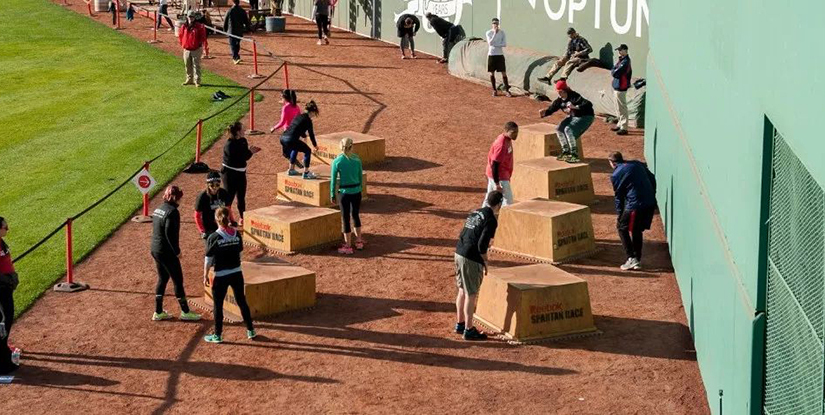Wooden Fitness Equipment: Guide to Types, Care & Safety

Wooden Fitness Equipment: Tradition Meets Performance
Wooden fitness equipment combines natural materials, thoughtful design and functional performance for home gyms, studios and outdoor training spaces. From plyo boxes and parallettes to gymnastic rings and balance boards, well-crafted wooden tools offer durability, aesthetic appeal and a comfortable tactile experience. This guide examines common types, material choices, maintenance practices, safety considerations and exercise applications to help professionals and enthusiasts make informed decisions.
Benefits of Choosing Wooden Fitness Gear
- Durability and resilience when manufactured from high-quality hardwoods.
- Comfortable grip and reduced thermal conductivity compared with metal.
- Elegant appearance that integrates with home and studio environments.
- Sustainable sourcing and lower embodied carbon when responsibly produced.
- Customizability in size, finish and ergonomics to suit training needs.
Common Types of Wooden Fitness Equipment
- Plyometric boxes: Solid wooden plyo boxes provide stable platforms for jump training and can be manufactured as single-piece or stackable units.
- Parallettes: Low wooden bars for bodyweight movements that emphasize wrist comfort and grip consistency.
- Gymnastic rings: Wooden rings offer a secure, tactile surface that improves grip and reduces strain on the hands compared to plastic alternatives.
- Pull-up and chin-up bars/mounts: Wooden wall-mounted boards and beams provide a warm, shock-absorbing surface for holds and hang routines.
- Balance boards and wobble boards: Curved wooden platforms for proprioception, rehabilitation and core training.
- Indian clubs and wooden clubs: Traditional swinging implements for shoulder mobility and conditioning.
- Wooden dumbbells and clubs: Specialty items crafted for aesthetic training spaces and functional movement practice.
Materials and Construction
High-quality wooden fitness gear is typically constructed from hardwoods such as maple, birch or beech. Plywood with cross-grain laminations is common for larger pieces like plyo boxes to prevent splitting and improve load distribution. Joints and edges should be sanded and rounded to minimize stress concentrations. Surface finishes vary from natural oil coatings to durable polyurethane, each affecting grip, moisture resistance and maintenance requirements.
Design Considerations
- Load capacity: Verify rated weight limits and safety factors for dynamic use (plyometrics, drops).
- Ergonomics: Bar diameters, ring thickness and edge radii should match intended user profiles.
- Stability: Non-slip bases or rubber feet are essential for plyo boxes and balance tools.
- Modularity: Stackable or multi-height designs increase versatility for programming.
Maintenance and Care
Routine care extends service life and preserves safety. Wipe surfaces with a damp cloth and mild detergent; avoid prolonged moisture exposure. Reapply natural oils annually for unfinished surfaces or follow manufacturer recommendations for varnished pieces. Inspect fastenings, joints and hardware regularly; replace or tighten worn components immediately. Store wooden equipment away from direct sunlight and excessive humidity to prevent warping and delamination.
Safety and Best Practices
- Use appropriate footwear or train barefoot depending on equipment type and surface.
- Maintain sufficient clearance around equipment for dynamic movements.
- Train progressions: introduce advanced skills on wooden apparatus incrementally to reduce injury risk.
- Pair wooden items with appropriate mats or turf when risk of impact is present.
- Follow manufacturer weight ratings and warranty conditions.
Exercise Applications
Wooden equipment supports a broad range of modalities: plyo boxes for explosive lower-body development, parallettes and rings for upper-body and core strength, balance boards for stability and proprioception, and clubs for shoulder conditioning and joint mobility sequences. Their tactile properties are particularly advantageous for gymnastic and calisthenic training where grip feedback influences technique.
Sustainability and Sourcing
Choose vendors who disclose wood species, sourcing practices and certification (e.g., FSC). Engineered woods with low formaldehyde emissions and responsible finishing systems reduce environmental and indoor air quality impacts. Longevity and reparability are also key sustainability metrics—investing in durable, repairable pieces minimizes lifecycle environmental cost.
Buying Guide
- Assess training goals: select equipment types that align with programming needs.
- Check specifications: dimensions, load ratings and finish details.
- Request sample finishes or product photographs when purchasing online.
- Prioritize reputable manufacturers and warranty coverage for commercial installations.
- Consider custom fabrication for unique spatial constraints or branding requirements.
FAQs
- Are wooden gymnastic rings better than plastic? Wooden rings offer superior grip and comfort for prolonged use.
- How do I maintain a wooden plyo box? Wipe clean, avoid moisture, inspect for cracks, and reapply finish as needed.
- Can wooden equipment handle high-impact training? Yes, if designed with appropriate hardwoods or laminated plywood and rated for dynamic loads.
- Is wooden equipment suitable for commercial gyms? High-quality pieces are durable enough for commercial use when properly specified.
- How do I prevent wood from warping? Store in stable humidity, avoid direct sunlight and use sealed finishes to limit moisture exchange.
- Are wooden parallettes good for beginners? Yes; they provide comfortable grips and are excellent for foundational bodyweight skills.
- What finish is best for grip? Natural oil or light matte finishes preserve tactile grip better than glossy varnishes.
- Can wooden equipment be recycled? Solid wood can often be repaired, repurposed or recycled; finishes affect end-of-life options.
- Should I choose custom or off-the-shelf wooden gear? Choose custom for unique spaces or specifications; off-the-shelf can be cost-effective for standard needs.

